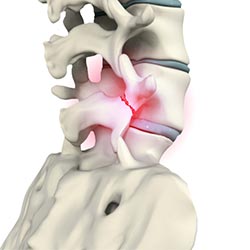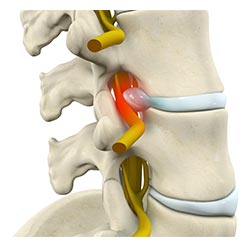Pediatric Spine
The spine in a growing child is unique. Growth of the spine is linked to growth of the chest, lungs and other internal organs. Injury or ailments affecting the spine require specialized care
Common Conditions:
Deformity:
Scoliosis: It is a condition where the spine or backbone is curved sideways instead of appearing in a straight line. It curves like an “S” or “C” shape. Larger curves cause discomfort while the small curves do not cause any problems.
The treatment for scoliosis is based on the assessment of the curve, cause, and your age. Mild scoliosis (less than 25°) may not require treatment and will be observed by your physician every 4 to 6 months for any progression in the curve. Bracing may be needed if the curve is more than 20-25° to help to slow the progression of scoliosis. Surgery is an option for severe scoliosis (curve >40°) to stop the curve from getting worse.

Kyphosis: When looking at the spine from the side, there is a normal convex curvature of the thoracic spine towards the back and an oppsite curvature of the lumbar spine. These are generally referred to thoracic Kyphosis and lumbar lordosis.
In some cases, the kyphosis of the thoracic spine is exaggerated. This may lead to progressive deformity and pain.
The treatment of kyphosis is based on the degree of kyphosis, whether it is progressive or stable, and the age of the child.
Observation: Mild kyphosis is observed. Xrays may be obtained every 6 months to see if there is any progression of the kyphosis.
Bracing: In growing children, bracing may be used to correct progression.
Surgery: In severe cases and in cases where the kyphosis is progressive surgery may be recommended.
Spondylolysis and Spondylolisthesis:

Spondylolysis is a condition in which the part of the spine develops an area of weakness. This is a common source of low back pain in active children. The area of weakness may be a result of activities leading to a stress fracture or may have been present from birth. It usually involves the lumbar spine.
Diagnosis: A careful exam is done to determine the location of the pain. Maneuvers may be done to reproduce the pain. A neurologic exam is done to rule out any pressure on nerves. Xrays are performed to look for the defect. If suspicion is high, an MRI or CT scan ma be ordered to confirm the diagnosis.
Treatment: Treatment involves restrictions from activities, bracing and physical therapy. The goal is to get symptoms to resolve, and slowly and safely return to activities. Spondylolysis not responsive to restrictions and therapy may warrant surgery, but this is rarely necessary.
Spondylolisthesis: Occasionally spondylolysis will allow the bones in the lower back to slide forward on each other. Mild cases are asymptomatic and are usually picked up on xrays obtained for unrelated conditions. In more severe cases the forward slip may be more severe resulting in pain, weakness and gait abnormalities.
Diagnosis: A detailed exam is done to look at the gait of the child, assess weakness in the lower extremities and document the location of the pain. Xrays and MRI scans are done to determine the extent of the slip and any other associated conditions.
Treatment: Mild cases are observed, more severe cases may require surgery to correct the alignment and take pressure off the nerves.
Lumbar Disc Herniation and Radiculopathy

Lower back pain can be caused by a number of different conditions. Although rare in children, young athletes can occasionally develop pain in the lower back radiating to the legs. This can be caused from a herniated disc in the lumbar spine causing pressure on a nerve.
Diagnosis: History and examination will give clues to the cause of the lower back pain. Xrays are done to rule out other obvious reasons for lower back pain. In the presence of neurological signs such as weakness and numbness, an MRI may be ordered to assess for a disc herniation and nerve compression.
Treatment: In the absence of neurological signs of numbness and weakness, initial treatment may involve rest, medications and therapy. Majority of patients will recover with these interventions.
In the presence of neurological signs or in situations where more conservative measures are not helping, an MRI may be ordered. If the MRI confirms a disc herniation causing significant compression of the spinal canal or a nerve, surgery may be indicated.

